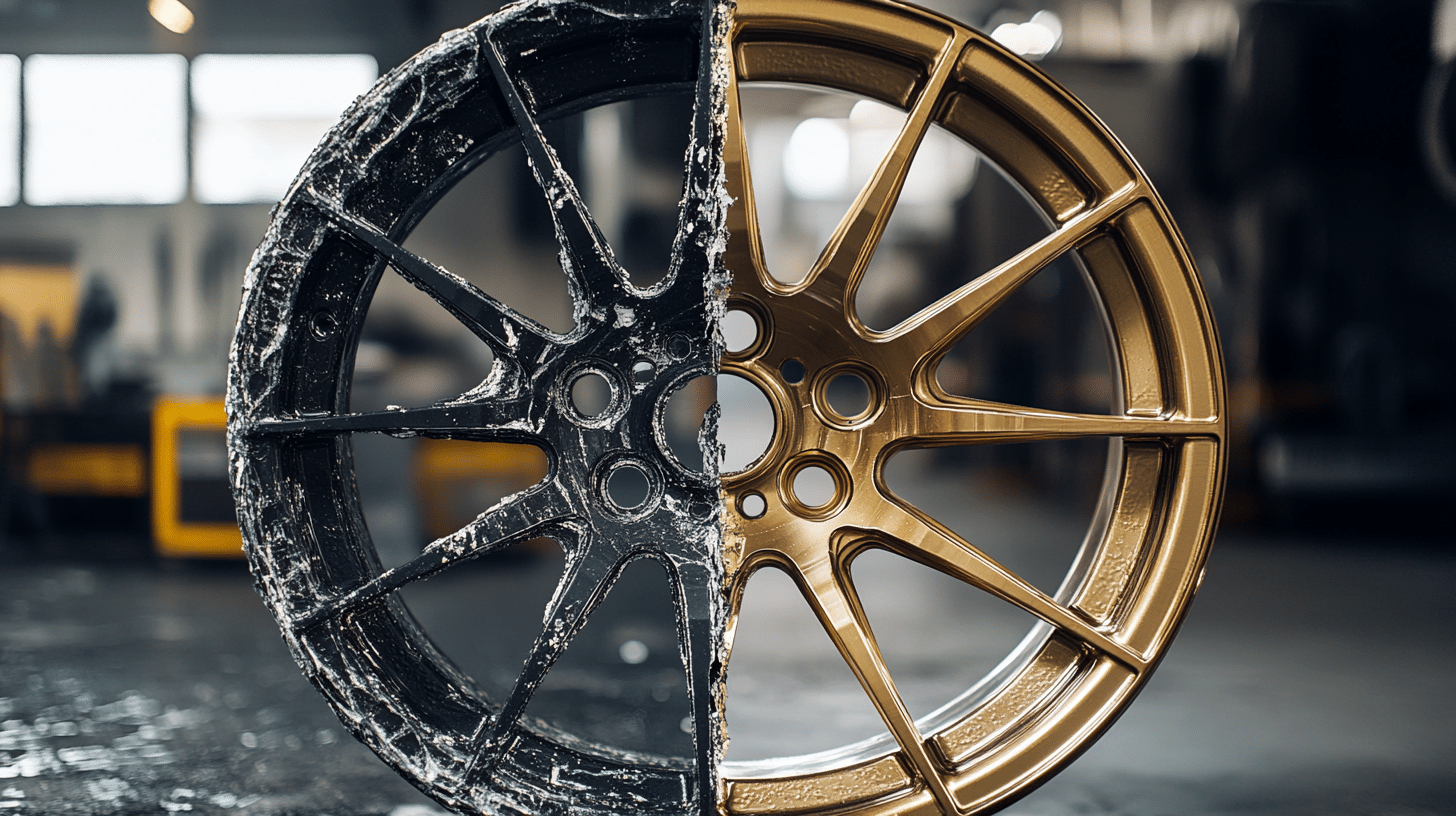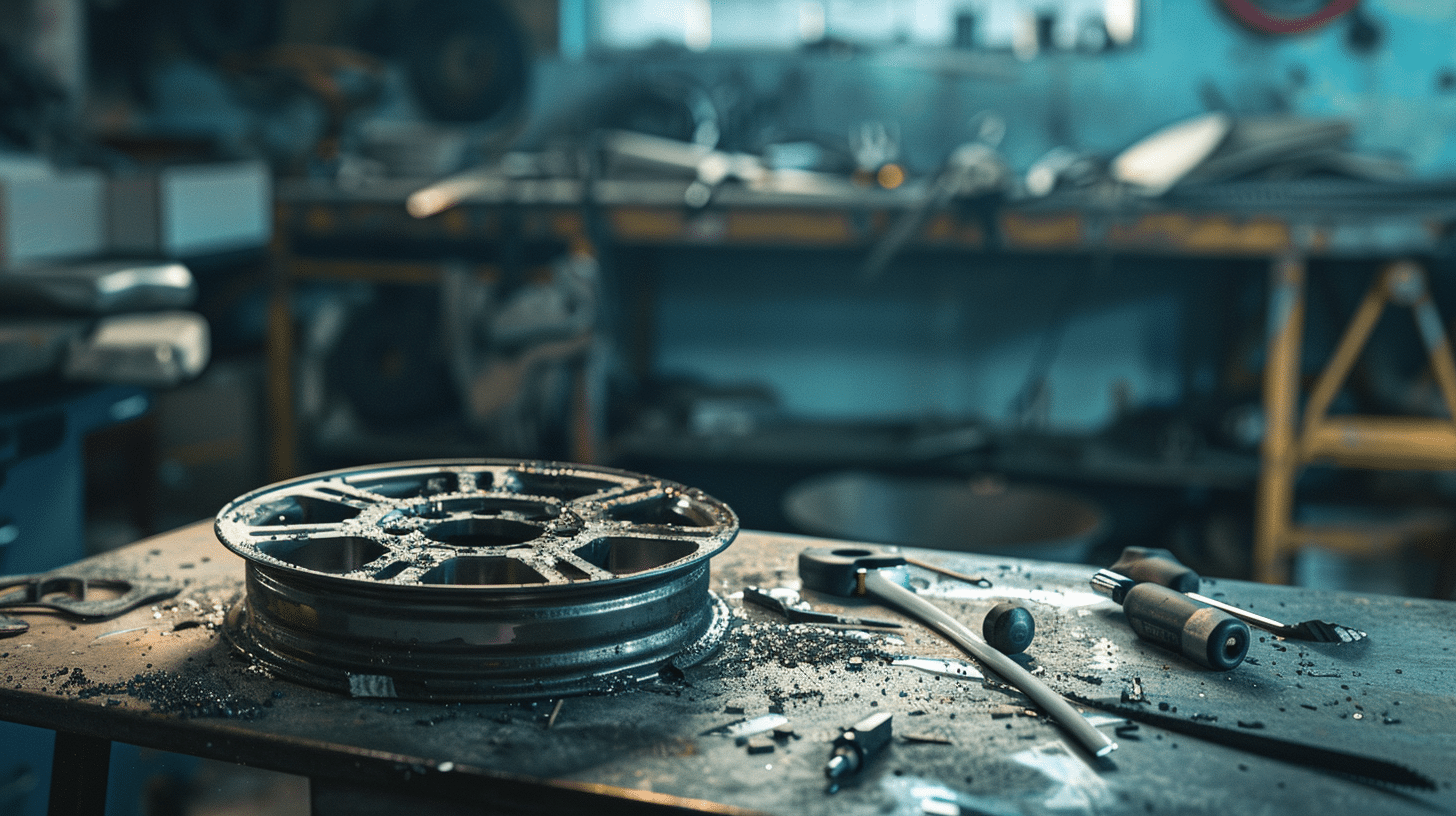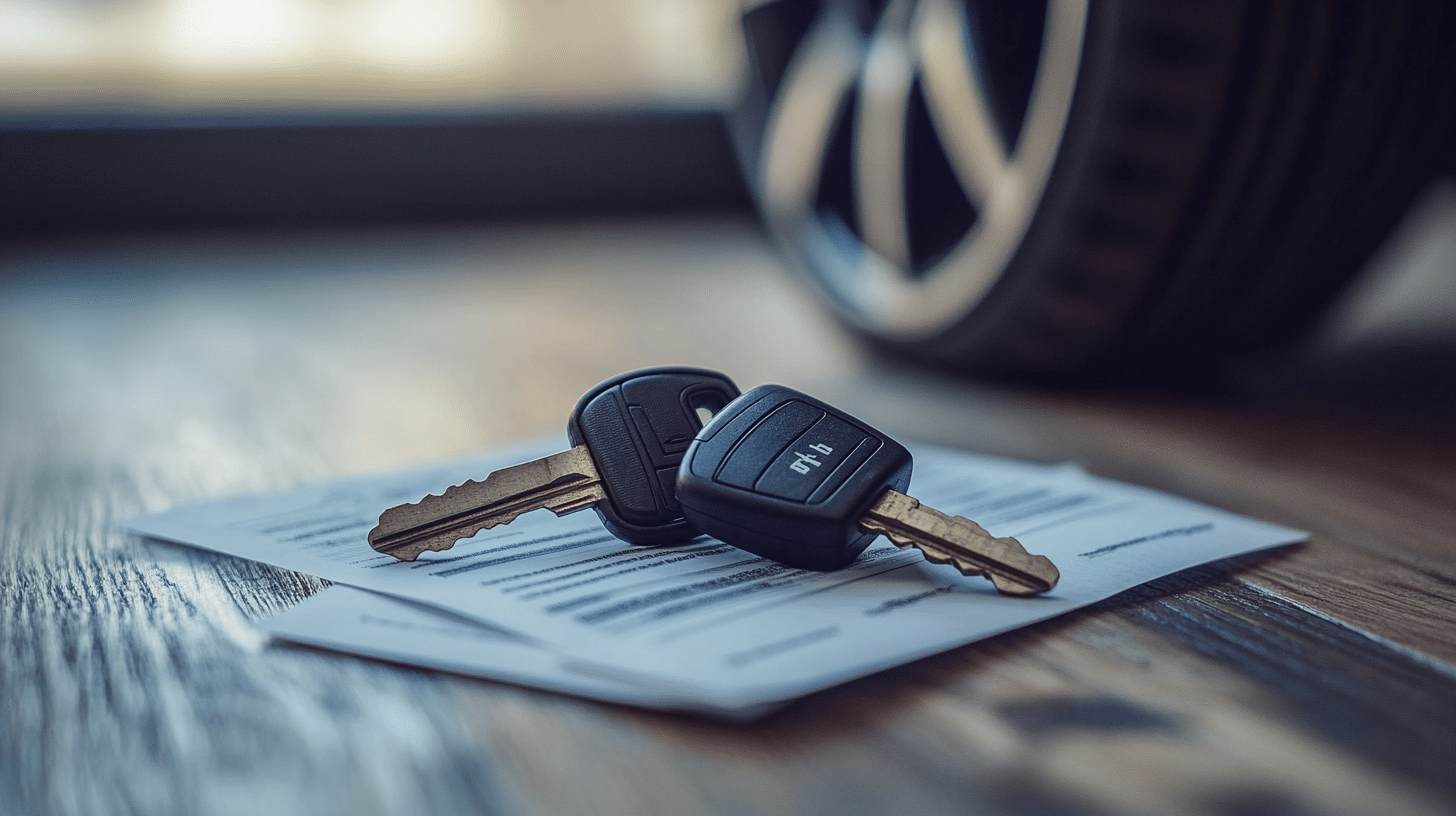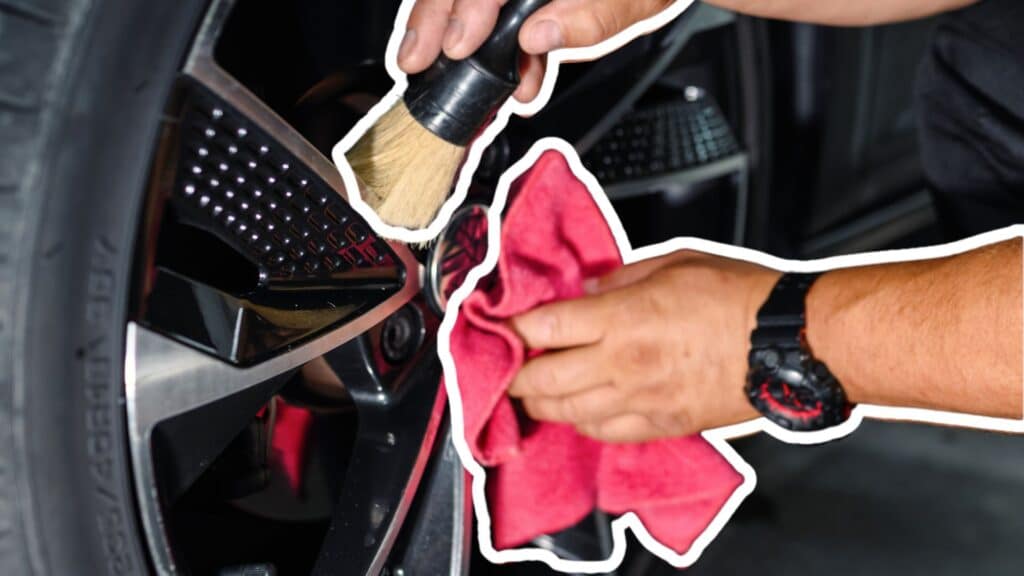Imagine driving your car only to notice ugly marks on your wheels. Have you ever thought about how much fixing those wheel blemishes might cost?
The price of rim fixes often surprises car owners, making it difficult to decide whether to repair or get new ones.
From small scrapes to big dents, knowing about rim costs helps you make good choices for your car’s looks and safety.
Did you know that fixed prices can vary greatly depending on the rim’s material and the extent of the damage?
This guide will show you all you need about rim cost expenses. We’ll look at costs for different rim types, what makes prices go up or down, and give tips to keep your wheels nice without spending too much. Want to learn the real story about rim repair costs?
Understanding Rim Damage
Rim damage comes in various forms, affecting your car’s look and safety differently. Let’s break down the main types.
Types of Rim Damage
- Curb Rash: This is the most common issue. It happens when your wheel scrapes against a curb, leaving marks or small scrapes. While it looks bad, it’s often not too serious.
- Corrosion: Over time, your rims might rust or wear down. This can weaken the rim if left unchecked.
- Dents and Cracks: These often come from hitting potholes or other hard objects. They’re more serious and may need complex fixes.
How Damage is Checked
- First Look: A quick check can spot issues like scrapes or dents.
- Careful Review: An expert will then examine the damage closely to determine how bad it is and what kind of fix it needs.
Understanding these basics helps you know what to expect when checking and fixing your rims.
Common Rim Repair Techniques and Their Costs

Different types of damage require different fixing methods. Here are the most common ways to repair rims and their costs.
1. Rim Straightening
- When It’s Used: If your rim is bent or has a big dent
- How It Works: A special machine pushes the rim back into its right shape
- What It Costs: Usually between $65 and $190, depending on how bad the bend is
2. Welding and Filling
- When It’s Used: For rims with cracks or holes
- How It Works: A repair person uses welding tools to fill the damaged spots.
- What It Costs: This can run from $130 to $320, based on how big the damage is
3. Rim Refinishing
- When It’s Used: For rims that look bad but aren’t badly hurt, like those with scrapes
- How It Works: The rim gets sanded down and painted to look new again
- What It Costs: Expect to pay $65 to $150, depending on how nice you want the finish to be
Knowing these methods can help you guess how much your rim fix might cost before you take your car in.
Factors Influencing Rim Repair Costs

The price of fixing your rims can vary depending on several factors. Understanding these can help you better estimate your payment.
1. How Bad the Damage Is
- Small problems often cost less to fix than big ones
- Complex repairs that take more time will cost more
2. What Your Rim is Made Of
- Alloy rims usually cost less to repair
- Chrome rims often cost more because they’re harder to fix
3. Where You Get It Fixed
- Shops in cities might charge more than those in small towns
- Places with more skilled workers might have higher prices
4. Your Car’s Brand and Type
- Fancy cars sometimes have special rims that cost more to fix
- Common car brands might have cheaper rim repair costs
Knowing these factors can help you understand why rim repair costs differ from one car to another or from one shop to another.
Comparing DIY vs. Professional Rim Repair

When fixing your rims, you can choose between doing it yourself or hiring a pro. Let’s look at both options.
Fixing It Yourself (DIY)
Repairing alone can save money, but it needs some skills and tools. The total cost for materials like sandpaper, paint, and filler is usually between $75 and $170.
DIY is often cheaper but can cause more damage if not done right. If you’re good with car fixes, it’s best for small scrapes.
Getting a Professional to Fix It
Professional repair usually costs more but offers several advantages. Depending on the damage, prices range from $60 to $510 per wheel.
Experts have the right tools and know-how to fix your rims well. Many also promise to resolve issues that might come up later.
Your choice depends on your skills, the extent of the damage, and your budget. If you’re unsure, getting help from a pro is often safer for your car’s health and appearance.
When to Repair vs. When to Replace

Deciding whether to fix or swap out your damaged rim is a key choice. It affects both your wallet and your car’s safety. Let’s look at when to pick each option:
1. Repair Considerations
Fixing your rim often works best for small to medium damage. It’s usually cheaper and helps keep your car’s value up.
Repairs make sense when the rim has minor scrapes, small dents, or light curb marks. This choice saves money and is good for the environment, too.
2. Replacement Considerations
Sometimes, getting a new rim is the smarter move. This is true for rims with big cracks, major bends, or lots of rust.
While it costs more upfront, a new rim ensures your car stays safe. It’s also a good choice if your current rim has often been fixed.
3. Getting Expert Advice
It’s smart to ask a pro before you decide. They can check your rim closely and tell you which choice is best.
They know about safety rules and can spot problems you might miss. Their advice helps you make a choice that’s good for your car and your budget.
Remember, your safety comes first. If you’re unsure, it’s better to ask an expert than guess.
The Role of Insurance in Managing Rim Repair Costs

Insurance can play a big part in handling the costs of rim fixes. Consider how it can help and what to consider when picking a policy.
Alloy Wheel Insurance
Some car insurance plans offer special coverage for your rims. This type of insurance helps pay for fixes if your rims get damaged by accident.
It can cover things like scrapes from curbs, dents from potholes, or other unexpected harm to your wheels.
Having this insurance gives you peace of mind. You won’t have to worry as much about sudden repair bills.
It’s especially handy if you often park in tight spots or drive on roads with many potholes.
Choosing the Right Policy
When looking at rim insurance, there are a few things to remember. First, check what kinds of damage the policy covers.
Some might only pay for certain types of fixes. Also, compare the policy’s cost to the price of repairs in your area.
Think about your driving habits, too. If you rarely have wheel problems, a basic policy might be enough.
But if you often drive in areas where rim damage is likely, a more complete policy could save you money in the long run.
Remember to read the fine print. See if there’s a limit on how many times you can claim or if you must pay part of the repair cost yourself.
Comparing different policies can help you find the best fit for your needs and budget.
Conclusion
Keeping your car’s rims in good shape is key to its looks and safety. Now that you know more about rim costs, you can make smart choices when faced with wheel damage.
Remember, the price of fixing your rims can vary based on many factors, from the type of damage to where you get it fixed.
Whether you do it yourself or hire a pro, always prioritize safety. Consider insurance options that might help cover unexpected rim costs.
Taking good care of your rims and addressing issues early can save money in the long run. If you have questions about your specific rim repair needs, don’t hesitate to ask a trusted mechanic for advice.
Frequently Asked Questions
Is Rim Replacement Expensive?
Rim replacement costs vary. New rims can range from $50 to $1000 per wheel, depending on the material, brand, and size. High-end or custom rims are typically more expensive.
Is It Better to Fix a Rim or Replace It?
It depends on the damage. Minor scratches or dents are often cheaper to fix. Severe damage affecting the rim’s structure or safety usually requires replacement. A mechanic can help you decide.
How Much Do Rims Usually Cost?
Rim costs vary widely. Basic steel rims might cost $50-$100 each. Alloy rims typically range from $100-$500 per wheel. High-end or custom rims can cost $1000 or more each.


